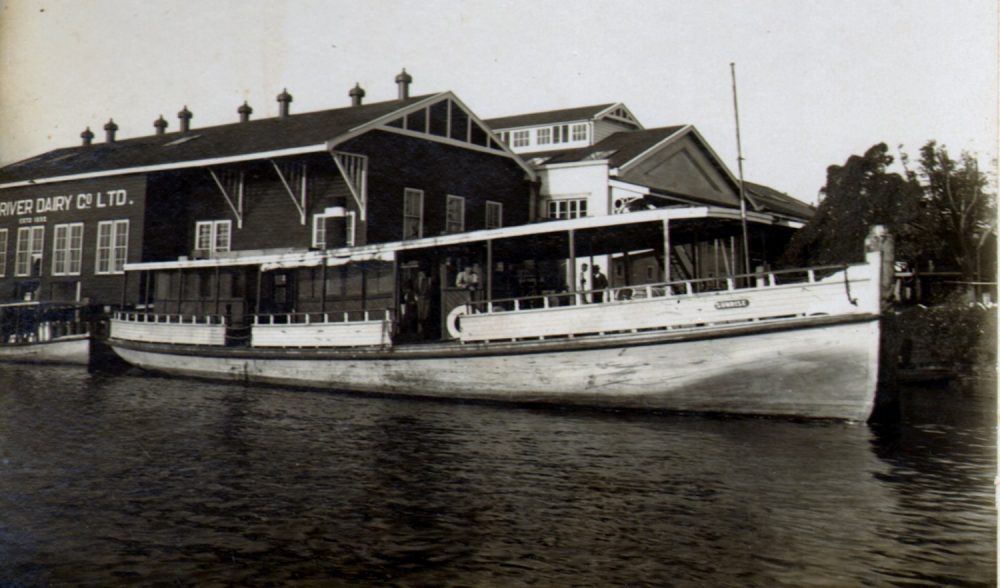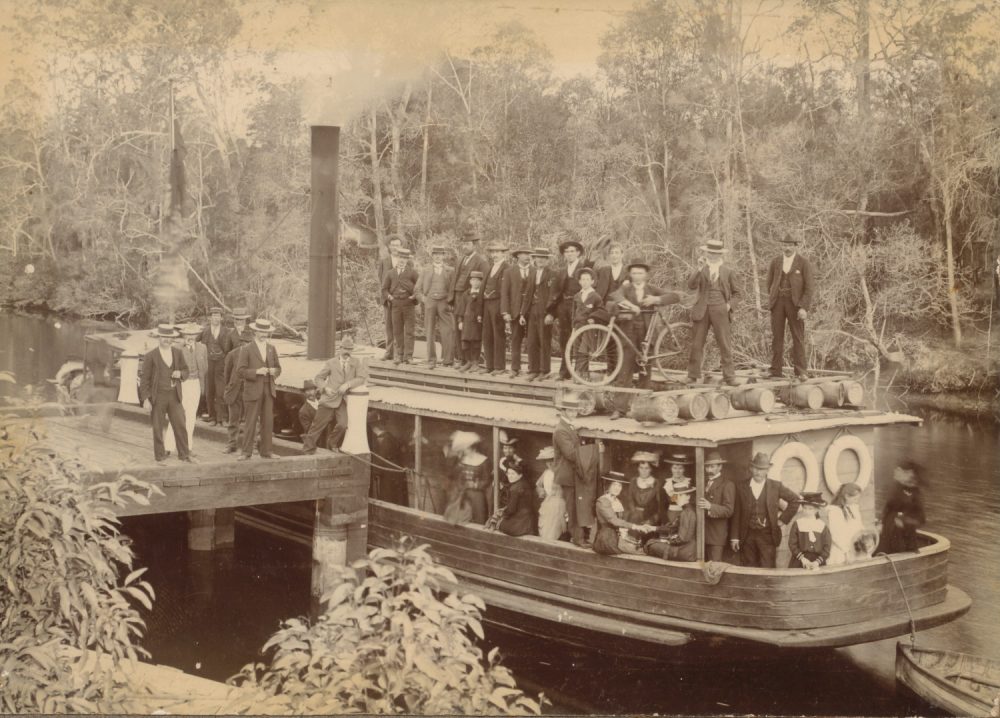Cream Boats
Extract from
Manning River Times
(22 February 1952)
..”It was a sad day for the Manning when they sold the SUNRISE…”
The pride of M.R Co-op. Dairy Society’s river fleet, this trim Manning-built cream-boat was a landmark in Manning life in the years between the wars. Plying between the old Mitchell’s Island factory and Wingham, the SUNRISE not only made proper use of the waterway for the conveyance of cream, as well as delivering various types of goods, but she also carried passengers. She was the means of many a visitor to the district gaining the best possible impression of the manning. Staffed by a genial and hard-working crew — Skipper Tom Gale, engineer Bill Carmody, deckhand George McCarthy — The SUNRISE would come steaming up the channel to Tinonee at about 9am pushing up a creaming bow-wave which broke like a young surf along the river foreshore in her wake, often to the discomfiture of anglers in small boats, who would narrowly avert swamping.
Captain and crew would busily unload empty cans at the old John See’s wharf, and pick up whatever cream had already been brought in, mainly by horse-drawn vehicles. As often as not a group of passengers would embark for the run to Wingham, quite likely a visitor or two for Tinonee would get off. The trip to Wingham was an experience of which one would never grow tired, and Tinonee people almost invariably would take any visitors they had for a half-day voyage. The trip up river was leisurely, insofar as the boat called at farm landing stages alternatively on either side of the river, setting down empties and goods, picking up the cream from farmers who would almost invariably be waiting with their horses and slide to take the empties home. Cheery conversation would take place between farmers, crew and passengers —- dogs would bark at the swirling water from the propeller blades, wives and children would wave form the farm-houses here and there — it was a beautiful world of rich alluvial farms, thriving crops, and sleek cattle. All the time George McCarthy would be rowing in the pulling-boat to less accessible landing places, meeting the SUNRISE at rendezvous here and there — he’d just row,row,row. Bill Carmody was up and down the engine-room ladder as required, to help with the gang-plank at awkward places, but he found time to keep the magnificent full diesel engine in spotless condition and perfect running order. At length the last pick-up would be made and the boat would enter a long straight willow-lined reach and proceed to Wingham’s £4,000 wharf, where a whole fleet of cream lorries were lined up. (In earlier days, when earlier boats, the YANKEE JACK and EXPRESS plied, this line-up was of covered horse-drawn vans).
Tommy Gale would inform his passengers that they had twenty minutes to explore Wingham Brush, which they would do forthwith—gaze in wonder at the big fig trees, and move along their cavernous roots, scurry along the leaf strewn pathways, gather black apples and the like, then back to the SUNRISE, where loading would be about complete.
Cast off the hawser, engine room telegraph would ring, the engine throb, move out astern, back and fill, then head non-stop at a good fast speed for home. Lunch time now, appetites most healthy. Hot water available–various pots of tea made, passengers and crew alike would attack their hampers, Bill and George sitting on deck, Tom in his wheel house at the helm. Back to Tinonee all too quickly–“fares please” in the meantime, very small fares–then passengers ashore, more passengers embark, more cream is taken on (the decks are filling now), blast on the siren to warn the punt, cast off and away…
The milk trade came, road transport right to the farmer’s dairy took over from the boats, and the day came when the little ship was sold. With a new super-structure, she was plying on Sydney harbour, in the vicinity of Luna Park–most likely she still is. Would that the SUNRISE could return to her native waters once again, if only at Aquatic Carnival time to enable visitors to see, in matchless fashion, the waterway which Mr F.A. Fitzpatrick termed the “Magnificent Manning”.


